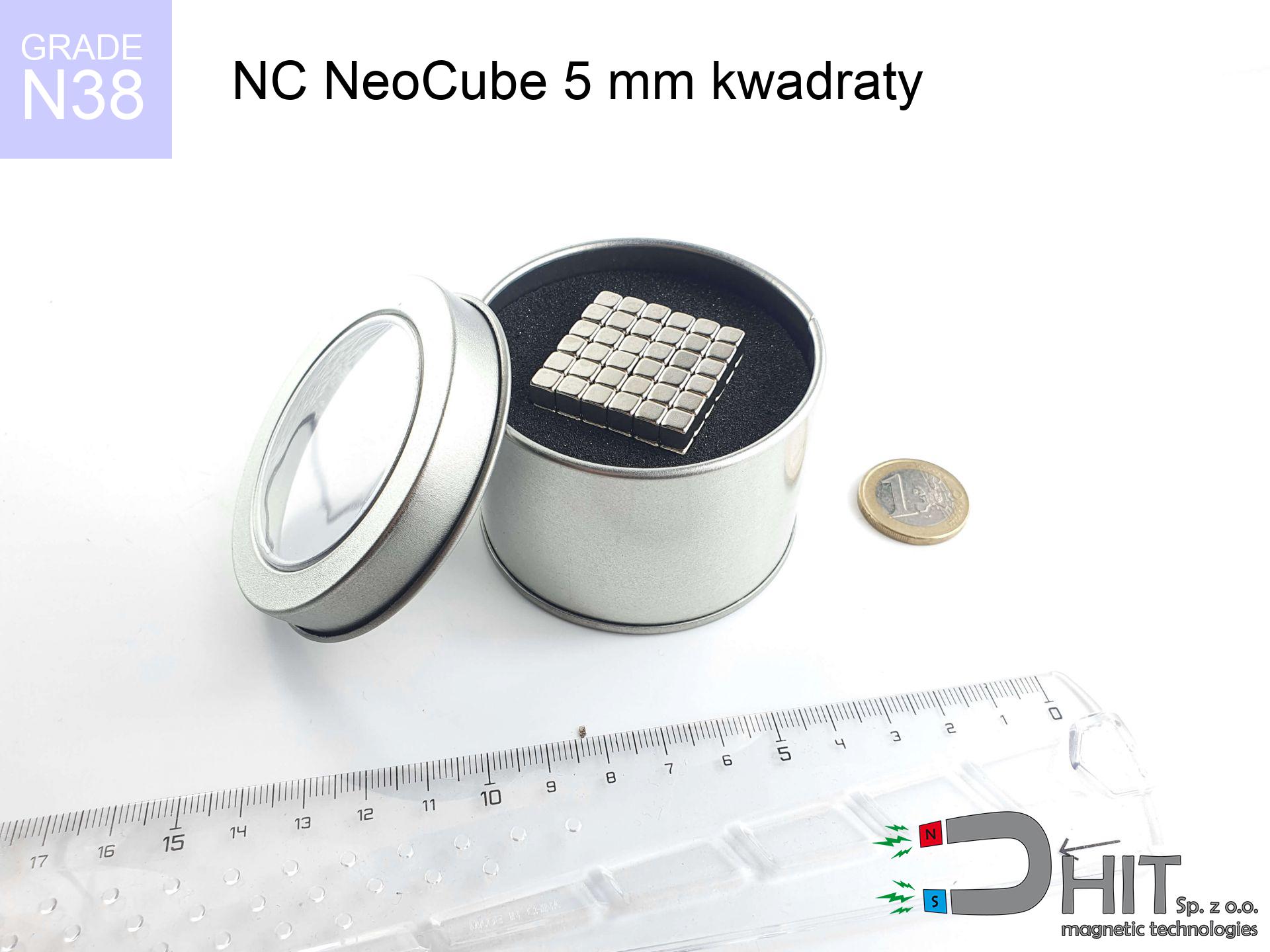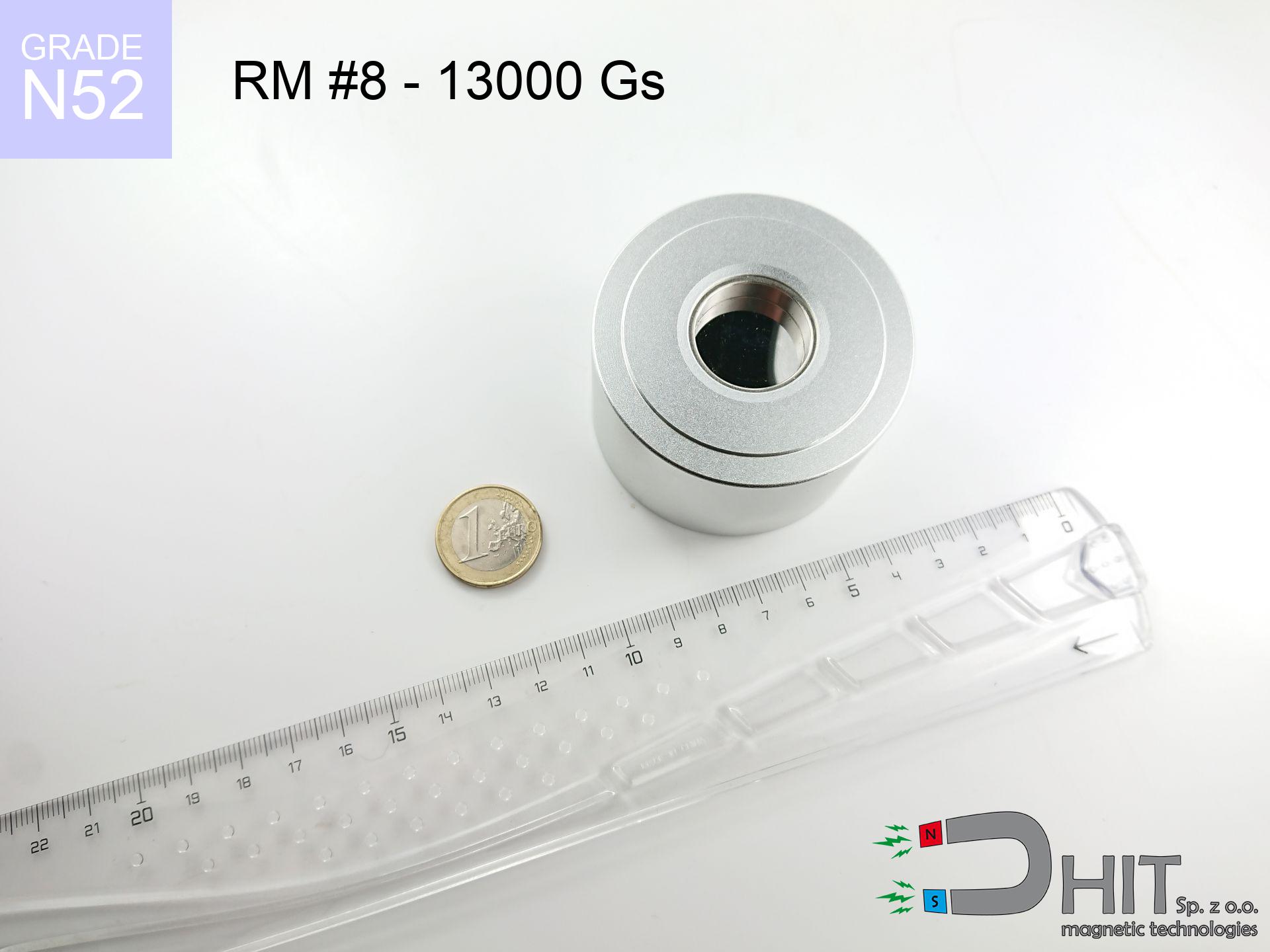UMP 79x50 [M8] GW - search holder
search holder
Catalog no 210260
GTIN: 5906301813934
Diameter Ø [±0,1 mm]
79 mm
Height [±0,1 mm]
50 mm
Weight
1.95 g
Load capacity
340 kg / 3334.26 N
Coating
[NiCuNi] nickel
270.00 ZŁ with VAT / pcs + price for transport
219.51 ZŁ net + 23% VAT / pcs
bulk discounts:
Need more?Want to talk magnets?
Call us
+48 22 499 98 98
or send us a note through
form
our website.
Weight and shape of magnets can be estimated on our
magnetic mass calculator.
Same-day shipping for orders placed before 14:00.
UMP 79x50 [M8] GW - search holder
Magnetic properties of material
Physical properties of NdFeB
Shopping tips
Advantages as well as disadvantages of neodymium magnets NdFeB.
In addition to their exceptional magnetic power, neodymium magnets offer the following advantages:
- They do not lose their magnetism, even after nearly ten years – the decrease of lifting capacity is only ~1% (theoretically),
- Their ability to resist magnetic interference from external fields is notable,
- Because of the lustrous layer of silver, the component looks aesthetically refined,
- They possess strong magnetic force measurable at the magnet’s surface,
- Thanks to their enhanced temperature resistance, they can operate (depending on the shape) even at temperatures up to 230°C or more,
- Thanks to the flexibility in shaping and the capability to adapt to individual requirements, neodymium magnets can be created in various configurations, which increases their functional possibilities,
- Important function in advanced technical fields – they are utilized in computer drives, electric motors, medical equipment along with sophisticated instruments,
- Relatively small size with high magnetic force – neodymium magnets offer intense magnetic field in compact dimensions, which makes them useful in compact constructions
Disadvantages of rare earth magnets:
- They are prone to breaking when subjected to a heavy impact. If the magnets are exposed to physical collisions, it is advisable to use in a protective case. The steel housing, in the form of a holder, protects the magnet from breakage while also enhances its overall durability,
- High temperatures may significantly reduce the strength of neodymium magnets. Typically, above 80°C, they experience permanent deterioration in performance (depending on form). To prevent this, we offer heat-resistant magnets marked [AH], capable of working up to 230°C, which makes them perfect for high-temperature use,
- Due to corrosion risk in humid conditions, it is recommended to use sealed magnets made of synthetic coating for outdoor use,
- Limited ability to create internal holes in the magnet – the use of a external casing is recommended,
- Possible threat due to small fragments may arise, when consumed by mistake, which is crucial in the context of child safety. Additionally, tiny components from these magnets have the potential to complicate medical imaging if inside the body,
- Higher purchase price is an important factor to consider compared to ceramic magnets, especially in budget-sensitive applications
Maximum lifting force for a neodymium magnet – what contributes to it?
The given pulling force of the magnet means the maximum force, determined in the best circumstances, that is:
- with mild steel, serving as a magnetic flux conductor
- with a thickness of minimum 10 mm
- with a smooth surface
- with no separation
- under perpendicular detachment force
- under standard ambient temperature
Lifting capacity in practice – influencing factors
In practice, the holding capacity of a magnet is conditioned by the following aspects, in descending order of importance:
- Air gap between the magnet and the plate, as even a very small distance (e.g. 0.5 mm) causes a drop in lifting force of up to 50%.
- Direction of applied force, because the maximum lifting capacity is achieved under perpendicular application. The force required to slide the magnet along the plate is usually several times lower.
- Thickness of the plate, as a plate that is too thin causes part of the magnetic flux not to be used and to remain wasted in the air.
- Material of the plate, because higher carbon content lowers holding force, while higher iron content increases it. The best choice is steel with high magnetic permeability and high saturation induction.
- Surface of the plate, because the more smooth and polished it is, the better the contact and consequently the greater the magnetic saturation.
- Operating temperature, since all permanent magnets have a negative temperature coefficient. This means that at high temperatures they are weaker, while at sub-zero temperatures they become slightly stronger.
* Lifting capacity was determined using a steel plate with a smooth surface of suitable thickness (min. 20 mm), under perpendicular detachment force, however under shearing force the lifting capacity is smaller. Moreover, even a minimal clearance {between} the magnet and the plate lowers the lifting capacity.
Precautions
Neodymium magnets are over 10 times stronger than ferrite magnets (the ones in speakers), and their power can surprise you.
Familiarize yourself with our information to correctly handle these magnets and avoid significant injuries to your body and prevent disruption to the magnets.
Neodymium magnets should not be in the vicinity children.
Neodymium magnets are not toys. Do not allow children to play with them. In the case of swallowing multiple magnets simultaneously, they can attract to each other through the intestinal walls. In the worst case scenario, this can lead to death.
Under no circumstances should neodymium magnets be placed near a computer HDD, TV, and wallet.
Neodymium magnets generate intense magnetic fields that can damage magnetic media such as floppy disks, video tapes, HDDs, credit cards, magnetic ID cards, cassette tapes, etc. devices. They can also destroy devices like video players, televisions, CRT computer monitors. Do not forget to keep neodymium magnets at a safe distance from these electronic devices.
Neodymium magnets are primarily characterized by their significant internal force. They attract to each other, and any object that comes in their way will be affected.
If joining of neodymium magnets is not under control, then they may crumble and also crack. Remember not to approach them to each other or have them firmly in hands at a distance less than 10 cm.
Neodymium magnetic are extremely fragile, resulting in shattering.
Magnets made of neodymium are extremely fragile, and by joining them in an uncontrolled manner, they will crack. Neodymium magnets are made of metal and coated with a shiny nickel surface, but they are not as hard as steel. In the event of a collision between two magnets, there may be a scattering of fragments in different directions. Protecting your eyes is crucial in such a situation.
Neodymium magnets can demagnetize at high temperatures.
Although magnets have demonstrated their effectiveness up to 80°C or 175°F, the temperature can vary depending on the type, shape, and intended use of the specific magnet.
Neodymium magnets should not be near people with pacemakers.
Neodymium magnets generate strong magnetic fields. As a result, they interfere with the operation of a pacemaker. This is because many of these devices are equipped with a function that deactivates the device in a magnetic field.
Dust and powder from neodymium magnets are highly flammable.
Avoid drilling or mechanical processing of neodymium magnets. Once crushed into fine powder or dust, this material becomes highly flammable.
Keep neodymium magnets away from GPS and smartphones.
Intense magnetic fields generated by neodymium magnets interfere with compasses and magnetometers used in navigation, as well as internal compasses of smartphones and GPS devices.
The magnet coating contains nickel, so be cautious if you have a nickel allergy.
Studies clearly indicate a small percentage of people who suffer from metal allergies such as nickel. An allergic reaction often manifests as skin redness and rash. If you have a nickel allergy, try wearing gloves or avoid direct contact with nickel-plated neodymium magnets.
Exercise caution!
Please see the article - What danger lies in neodymium magnets? You will learn how to handle them properly.

![Search magnet UMP 79x50 [M8] GW - GOLD Series Search magnet UMP 79x50 [M8] GW - GOLD Series](https://cdn3.dhit.pl/graphics/banners/magnet.webp)
![UMP 79x50 [M8] GW - search holder](https://cdn3.dhit.pl/graphics/products/ump79x50-rib.jpg)
![UMP 79x50 [M8] GW - search holder](https://cdn3.dhit.pl/graphics/products/ump79x50-din.jpg)





